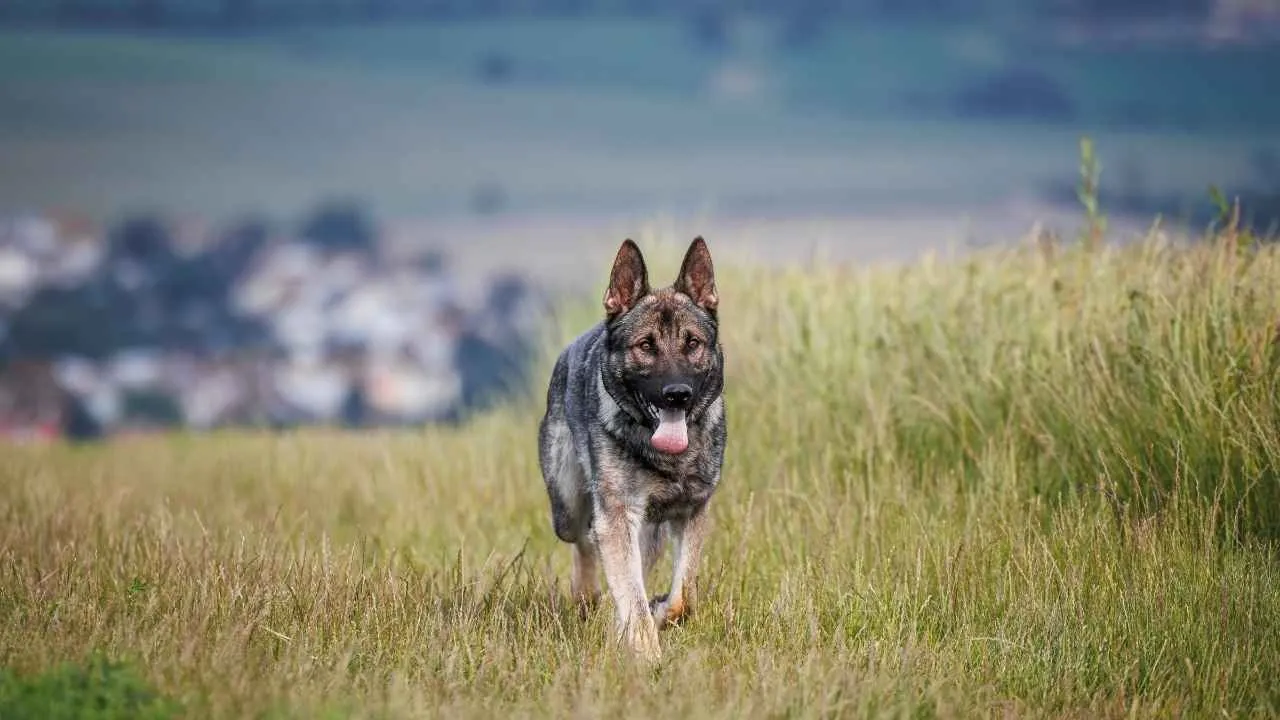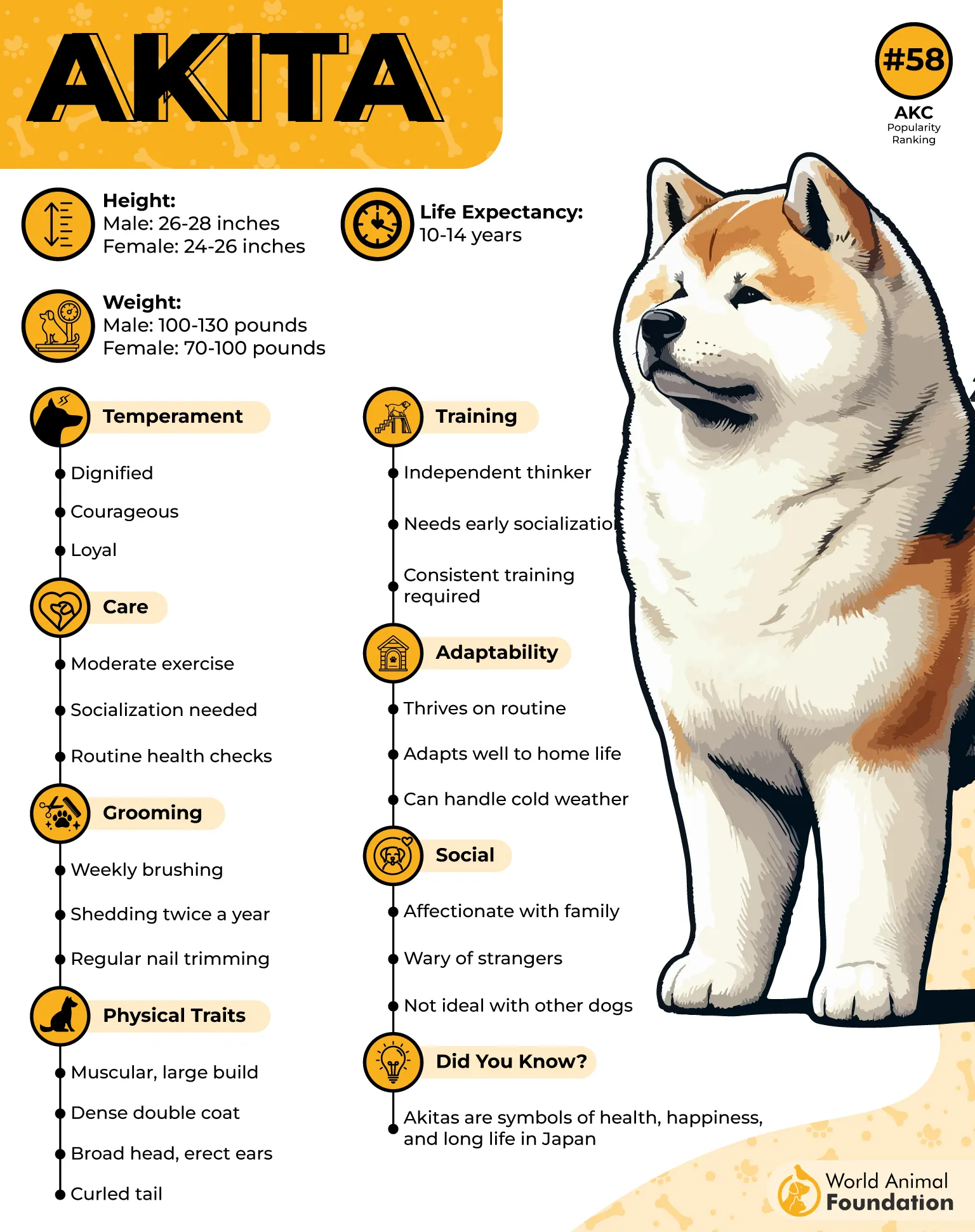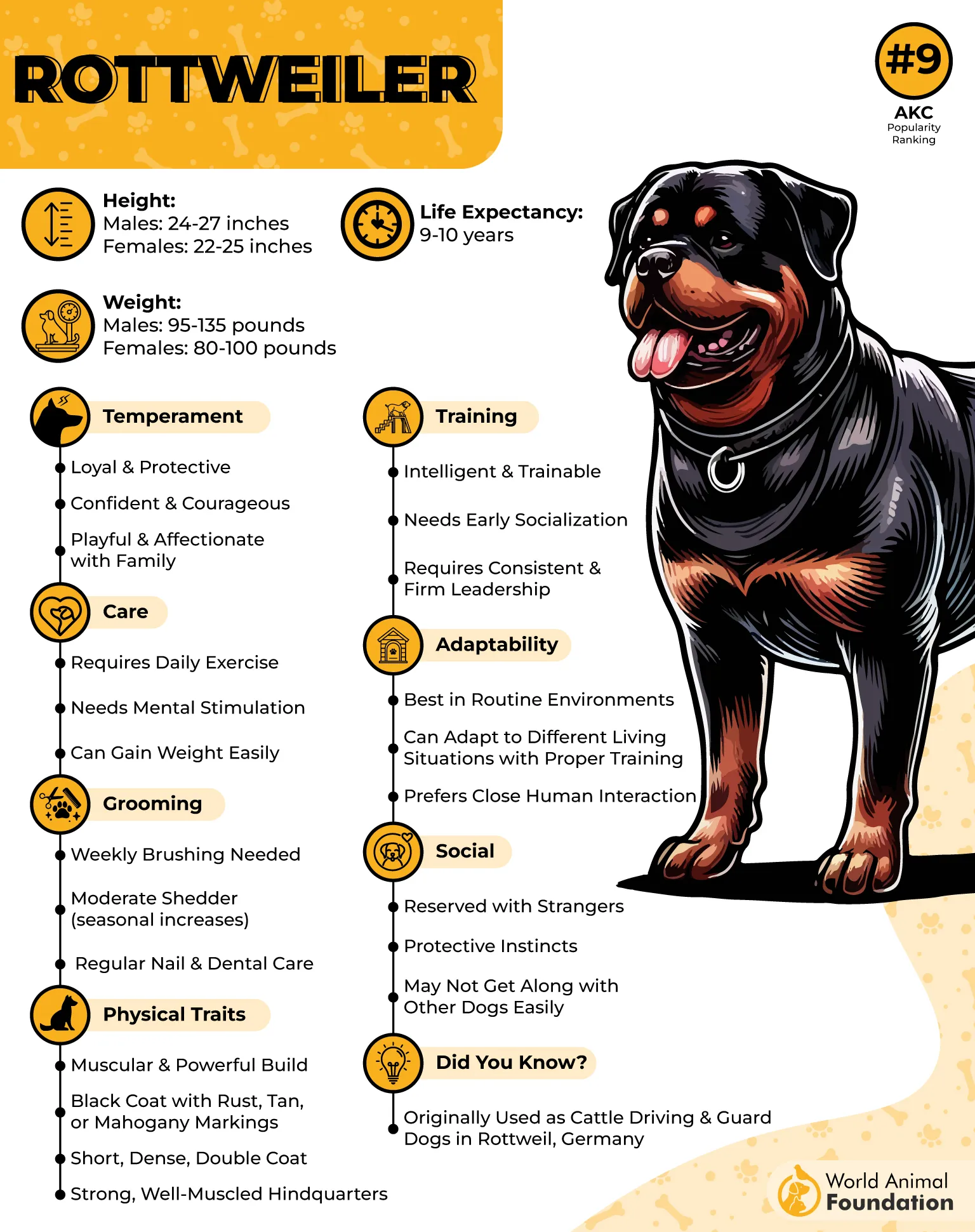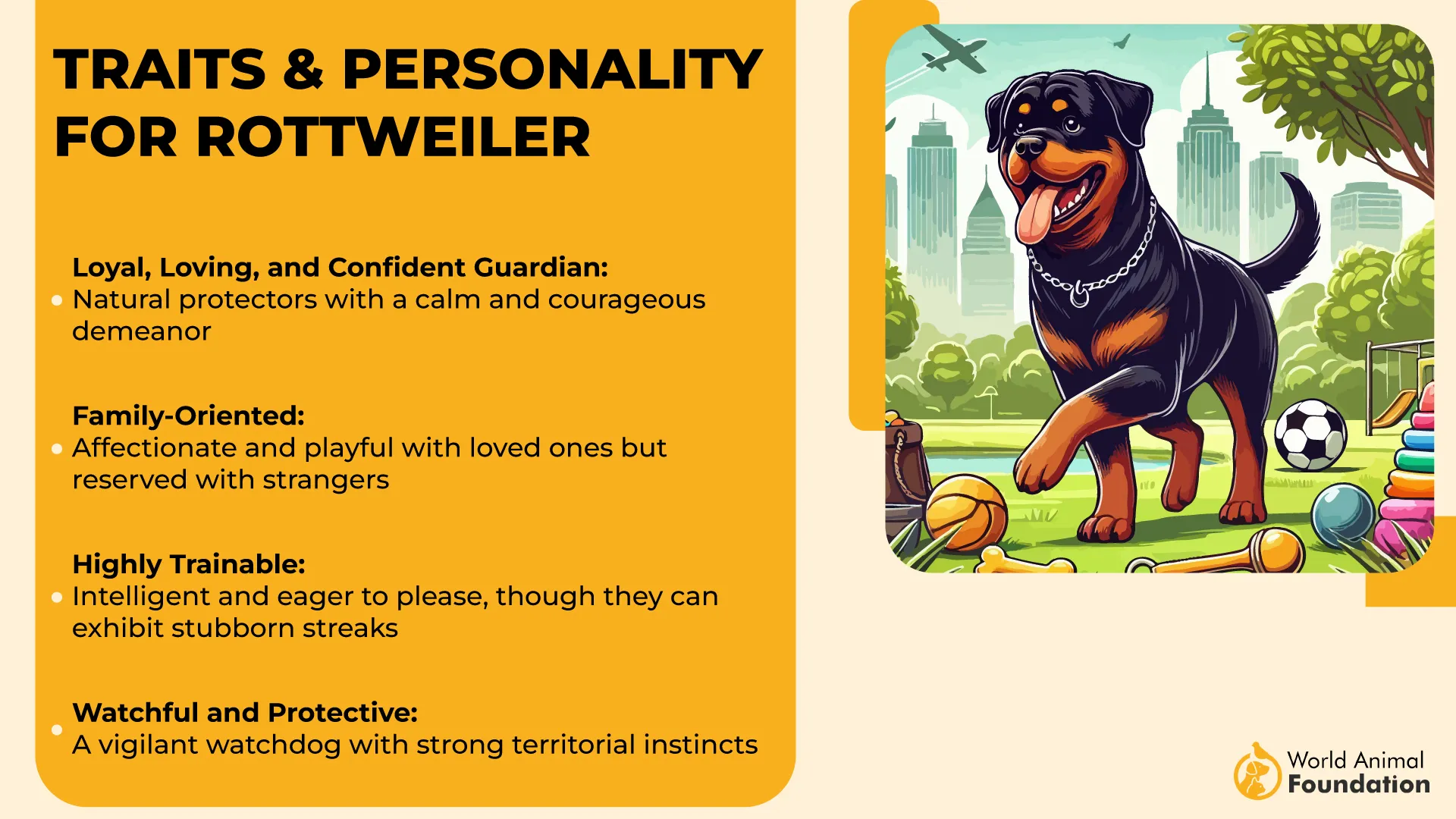Some dog breeds are wired to remain watchful long after the house grows quiet. Centuries of selective breeding shaped their instincts for guarding, herding, or simply keeping close to the people they trust.
These dogs pace softly across hallways, curl up near bedroom doors, and lift their heads at every small sound, staying alert until their owners finally rest. Their patterns aren’t a matter of sleeplessness—they have a natural rhythm that keeps them attentive when the sun sets, often serving as quiet companions through late‑night hours.
These breeds thrive on connection, drawing comfort from being near their families at the end of the day. Their sense of responsibility and loyalty fuels their wakefulness, whether it’s a guard dog scanning for intruders or a herder waiting for the household to settle.
This article explores seven breeds known for their habit of staying awake until their owners sleep, and the traits that make them perfectly suited to this nightly vigil.
Dog Breeds That Stay Awake Until Owners Sleep
1. German Shepherd

The German Shepherd was originally developed in late 19th‑century Germany as an all‑purpose herding and working dog. The focus on intelligence and stamina produced a breed that can spend long hours in motion without losing focus. Those traits translate into an alert presence in the home, especially during the quietest parts of the evening.
Their temperament is confident and steady, with a natural protective streak that makes them attentive to anything unfamiliar. German Shepherds watch doors and windows even when nothing seems amiss, as if waiting for the day to fully close.
They thrive when they feel included in their owner’s routines, matching energy levels by day and vigilance by night.

Work comes naturally to this breed. According to the AKC, police, military, and service programs use them because they respond quickly to cues and are capable of making decisions on their own. That same readiness means they rarely disengage until their handler relaxes.
Care involves more than exercise—it also means mental engagement. Puzzle toys, obedience drills, and scent games keep their minds sharp, which helps them settle more easily when night finally comes. Weekly brushing manages their double coat, which sheds consistently.
They are generally healthy but prone to certain inherited conditions like hip and elbow dysplasia. Responsible breeding and early screenings help prevent serious issues, keeping these dogs able to maintain their tireless role beside their families.
Fun Fact
German Shepherds can learn hundreds of commands and are among the few breeds trained to assist in scent‑tracking missions lasting more than 48 hours.
2. Akita

The Akita’s history is deeply rooted in northern Japan, where it was bred for guarding and hunting in harsh climates. That long tradition created a dog with quiet watchfulness, a breed that observes every movement in the home long after the lights go out. Their imposing presence and steady gaze give the impression that they are always on duty.
Their temperament is calm yet strong‑willed. Akitas are famously loyal to their families and tend to stay near their owners, often lying in doorways or hallways until everyone is safely asleep. They can be reserved with strangers, which heightens their awareness when visitors or unusual sounds disrupt the evening.

Daily activity helps balance their alert nature. Long walks, structured play, and early training guide their instincts into positive behaviors. Their thick double coat requires regular brushing, especially during seasonal shedding periods when it releases in heavy clumps.
PetMD states that these dogs handle cold weather exceptionally well, their coat insulating them even in freezing temperatures. Hot climates demand extra care, cool rest spots, hydration, and lighter activity to help prevent overheating.

Akitas are prone to some genetic conditions, such as thyroid issues and hip problems, but regular veterinary checks keep them thriving.
Fun Fact
In Japan, Akitas are considered symbols of protection and good health—small statues of the breed are often given as gifts to new parents and recovering patients.
3. Rottweiler

Rottweilers trace their lineage to Roman drover dogs that moved cattle and guarded encampments, a legacy that built their strength and stamina. Many Rottweilers stay attentive until their owners settle, sometimes pacing the perimeter of the house before lying down.
Their temperament blends confidence and calm. These dogs evaluate situations carefully, rarely acting without thought, and that patience extends into the evening hours. A Rottweiler may position itself near a bedroom door or sit in the hallway, quietly scanning for signs that the household is finally still.

They need steady exercise to keep their powerful bodies and minds balanced. Walks, pulling exercises, and obedience work give them structure. Their short, dense coat is easy to maintain, needing only quick brushing each week to remove loose hair.
Training with positive reinforcement shapes their protective instincts into dependable behavior. Rottweilers respond to guidance that feels fair, forming a strong partnership with the people they trust. That trust deepens their commitment to stay awake until they know their owners are safe.

Health issues can include joint problems and heart conditions, so regular vet visits are key. A well‑cared‑for Rottweiler combines watchful energy with quiet strength through every phase of life.
Fun Fact
During the Middle Ages, Rottweilers were used by butchers to pull carts of meat to market, earning them the nickname “butcher’s dogs.”
4. Cane Corso
The Cane Corso is an Italian mastiff with a legacy of strength and control. Originally bred to guard farms and livestock, they were relied on to make independent decisions and respond instantly to threats. At home, they are attentive through the night, quietly checking doors and windows before resting.
Their temperament is calm and self‑possessed. A Cane Corso rarely fidgets, but their eyes follow every movement, and its ears lift at faint noises. Many owners notice them taking positions in hallways or near entryways, as though designating themselves the night watch.
The coat is short and easy to maintain, needing only light brushing to keep it tidy. What matters more is managing their weight and exercising their muscles daily. Long walks, structured obedience work, and mental challenges keep them balanced.
Health care focuses on joint protection, since large dogs are prone to hip and elbow dysplasia. Screening and careful conditioning preserve their mobility into adulthood.
Centuries of selective breeding produced a dog that feels like part of the house’s foundation. Even when silent, a Cane Corso remains awake and aware until every member of the family is safe.
Fun Fact
Cane Corsos once accompanied Roman legions, working as guardians and war dogs along ancient roads.
5. Boxer
Boxers are athletic, expressive, and endlessly curious. They were originally developed in Germany for utility work and hunting support, and that foundation gave them both energy and vigilance. Even after a day of play, many Boxers remain alert into the night, quick to respond when the house stirs.
Training for a Boxer works best as a game. Short, cheerful sessions build good manners while satisfying their need for engagement, and they carry those lessons into their daily routines.
Their bodies demand exercise. Runs, agility courses, and long games of fetch help them burn energy, preventing restlessness that might otherwise keep them pacing after dark.
Their coat care is minimal, requiring only an occasional brushing, but heart health is a constant consideration. Boxers are prone to certain cardiac conditions, so owners schedule regular checkups.
Their playful temperament doesn’t fade as they age, and neither does their alertness. Even when sprawled on the couch, a Boxer will lift its head the moment someone approaches the door.
Fun Fact
Boxers were originally bred to hold large game, using their strong jaws to pin prey until hunters arrived.
6. Doberman Pinscher
The Doberman Pinscher is sleek, fast, and deliberate. Bred in Germany in the late 19th century as a protection dog, it combines elegance with intense awareness. Many Dobermans are still awake until their owners fully settle, keeping a quiet vigil over the home.
Mental work is vital for them. Complex obedience drills, scent games, and interactive training give their intelligence an outlet and shape their focus.
Purina states that their coat is smooth and nearly effortless to maintain, requiring only occasional brushing. More care is directed toward fitness and health monitoring, particularly for their heart.
Temperamentally, Dobermans are deeply bonded and perceptive. They often seem to read their handlers’ body language, moving or pausing before words are spoken.
Because of their athleticism, they need daily activity that matches their drive; long runs or tracking games are ideal. Even when they’re done moving, their eyes remain sharp, waiting for signs the day has truly ended.
Fun Fact
During WWII, Dobermans became the official U.S. Marine Corps dog, serving as scouts, messengers, and sentries in the Pacific theater.
7. Leonberger
The Leonberger carries a distinct presence, with a broad chest, balanced frame, and the striking mane of a lion. Originally developed in 19th‑century Germany, the breed was created by crossing Saint Bernards, Newfoundlands, and Pyrenean Mountain Dogs to produce a versatile working and companion dog.
The coat is one of their defining features. A dense double layer provides protection from the elements but sheds heavily, especially during spring and fall. Owners must commit to several brushing sessions each week to keep tangles and mats from forming, and extra care is needed during seasonal coat “blowouts.”
Temperamentally, Leonbergers are gentle and steady. They like to remain near their families, following them from room to room and settling in a spot where they can keep an unobstructed view. Their calm nature makes them suited for therapy work, yet their size and awareness give them an impressive guarding presence.
Joint strain and heart issues can appear in the breed, so weight management and regular veterinary care are important. Even with their bulk, they move gracefully, maintaining a quiet vigil long after the household rests.
Fun Fact
In the 19th century, Leonbergers were kept by royal courts across Europe, appearing in portraits with emperors, princes, and queens.
Conclusion
Many of these breeds have been shaped for centuries to provide security, and that instinct means they often stay awake until their families rest. For humans, there’s comfort in knowing a pup is quietly keeping watch, ready for action if something stirs. In many cases, this habit leads to a calmer household and a good night’s sleep for everyone.
Routines matter for every dog, from seasoned guardians to young puppies. Evening walks, a short round of playtime, and familiar signals help them behave and settle, even if they remain aware. Some may respond to small noises by waking and moving, while others stay still but alert, their heads lifting from the bed as you shift.
Owners should review and adjust habits if they notice pacing or whining, making sure their dogs are comfortable and their needs are met. When a dog loves his role, he’ll stay calm while completing his nightly watch.
It’s a common thing for guardians like these to pick a spot by a door, look down a hallway, and wait. If you verify their health and keep them interested, they will keep proceeding with the quiet purpose they were bred for, staying awake until you sleep.


